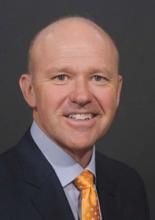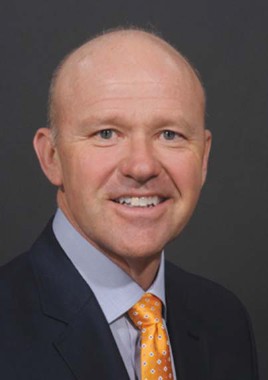User login
DANA POINT, CALIF. – For skin tightening, there’s no comparison between surgical and nonsurgical approaches as far as quality, predictability, and longevity, according to Dr. A. Jay Burns.
"Anyone who suggests to patients that nonsurgical contouring and rejuvenation share comparable results is either self-serving, dishonest, grossly naive, or misinformed," said Dr. Burns of the Dallas Plastic Surgery Institute. "In my opinion, surgical treatments are extremely reliable and nonsurgical treatments are extremely variable. But I’m not in an ivory tower. I realize that [surgical approaches result in] more complications and that they’re more expensive."
Surgical skin tightening involves total elevation, full repositioning, centimeter changes, and control, with predictable, clear results, he said at the meeting, sponsored by SkinCare Physicians and Northwestern University.
On the other hand, nonsurgical skin tightening involves no elevation, no repositioning, millimeter changes, and no control. This leads to results that he characterized as "unpredictable and subtle."
Dr. Burns acknowledged certain advantages of nonsurgical skin tightening approaches, such as the fact that they’re typically less expensive (except for brow dynamic line elimination), they eliminate the risk of nerve damage, and they require less downtime. He said he advises clinicians to recommend nonsurgical skin tightening for patients who prioritize downtime, cost, and risk over results. Surgical skin tightening is for those who want optimal results, maximum quality and predictability, and elegance, he said.
Dr. Burns said that there is "a clear place for" nonsurgical skin tightening techniques in his practice, and he emphasized the importance of fostering integrity during patient consultations. This includes informed consent, representing the technology honestly, and being honest with patients about expectations from procedures that you offer. Such practice "shows character and aids your reputation," he said. "It also prioritizes patient care over revenue."
He noted that the ThermiRF, developed by Southlake, Tex.–based ThermiAesthetics, represents a promising advance in noninvasive skin technology because it features a continuous temperature monitor on its internal probe. This radiofrequency device enables the user to administer the precise amount of heat for the collagen layer, Dr. Burns said. "There are some really nice results on the skin and neck," he said.
Dr. Burns disclosed that he has received equipment loans or discounts on equipment from Cynosure, Zeltiq Aesthetics, and other companies. He has held stock or stock options with Skin Medica and Zeltiq and has received honoraria from Solta Medical and Ulthera. He is an advisory board member for Cynosure, Ulthera, and Zeltiq.
DANA POINT, CALIF. – For skin tightening, there’s no comparison between surgical and nonsurgical approaches as far as quality, predictability, and longevity, according to Dr. A. Jay Burns.
"Anyone who suggests to patients that nonsurgical contouring and rejuvenation share comparable results is either self-serving, dishonest, grossly naive, or misinformed," said Dr. Burns of the Dallas Plastic Surgery Institute. "In my opinion, surgical treatments are extremely reliable and nonsurgical treatments are extremely variable. But I’m not in an ivory tower. I realize that [surgical approaches result in] more complications and that they’re more expensive."
Surgical skin tightening involves total elevation, full repositioning, centimeter changes, and control, with predictable, clear results, he said at the meeting, sponsored by SkinCare Physicians and Northwestern University.
On the other hand, nonsurgical skin tightening involves no elevation, no repositioning, millimeter changes, and no control. This leads to results that he characterized as "unpredictable and subtle."
Dr. Burns acknowledged certain advantages of nonsurgical skin tightening approaches, such as the fact that they’re typically less expensive (except for brow dynamic line elimination), they eliminate the risk of nerve damage, and they require less downtime. He said he advises clinicians to recommend nonsurgical skin tightening for patients who prioritize downtime, cost, and risk over results. Surgical skin tightening is for those who want optimal results, maximum quality and predictability, and elegance, he said.
Dr. Burns said that there is "a clear place for" nonsurgical skin tightening techniques in his practice, and he emphasized the importance of fostering integrity during patient consultations. This includes informed consent, representing the technology honestly, and being honest with patients about expectations from procedures that you offer. Such practice "shows character and aids your reputation," he said. "It also prioritizes patient care over revenue."
He noted that the ThermiRF, developed by Southlake, Tex.–based ThermiAesthetics, represents a promising advance in noninvasive skin technology because it features a continuous temperature monitor on its internal probe. This radiofrequency device enables the user to administer the precise amount of heat for the collagen layer, Dr. Burns said. "There are some really nice results on the skin and neck," he said.
Dr. Burns disclosed that he has received equipment loans or discounts on equipment from Cynosure, Zeltiq Aesthetics, and other companies. He has held stock or stock options with Skin Medica and Zeltiq and has received honoraria from Solta Medical and Ulthera. He is an advisory board member for Cynosure, Ulthera, and Zeltiq.
DANA POINT, CALIF. – For skin tightening, there’s no comparison between surgical and nonsurgical approaches as far as quality, predictability, and longevity, according to Dr. A. Jay Burns.
"Anyone who suggests to patients that nonsurgical contouring and rejuvenation share comparable results is either self-serving, dishonest, grossly naive, or misinformed," said Dr. Burns of the Dallas Plastic Surgery Institute. "In my opinion, surgical treatments are extremely reliable and nonsurgical treatments are extremely variable. But I’m not in an ivory tower. I realize that [surgical approaches result in] more complications and that they’re more expensive."
Surgical skin tightening involves total elevation, full repositioning, centimeter changes, and control, with predictable, clear results, he said at the meeting, sponsored by SkinCare Physicians and Northwestern University.
On the other hand, nonsurgical skin tightening involves no elevation, no repositioning, millimeter changes, and no control. This leads to results that he characterized as "unpredictable and subtle."
Dr. Burns acknowledged certain advantages of nonsurgical skin tightening approaches, such as the fact that they’re typically less expensive (except for brow dynamic line elimination), they eliminate the risk of nerve damage, and they require less downtime. He said he advises clinicians to recommend nonsurgical skin tightening for patients who prioritize downtime, cost, and risk over results. Surgical skin tightening is for those who want optimal results, maximum quality and predictability, and elegance, he said.
Dr. Burns said that there is "a clear place for" nonsurgical skin tightening techniques in his practice, and he emphasized the importance of fostering integrity during patient consultations. This includes informed consent, representing the technology honestly, and being honest with patients about expectations from procedures that you offer. Such practice "shows character and aids your reputation," he said. "It also prioritizes patient care over revenue."
He noted that the ThermiRF, developed by Southlake, Tex.–based ThermiAesthetics, represents a promising advance in noninvasive skin technology because it features a continuous temperature monitor on its internal probe. This radiofrequency device enables the user to administer the precise amount of heat for the collagen layer, Dr. Burns said. "There are some really nice results on the skin and neck," he said.
Dr. Burns disclosed that he has received equipment loans or discounts on equipment from Cynosure, Zeltiq Aesthetics, and other companies. He has held stock or stock options with Skin Medica and Zeltiq and has received honoraria from Solta Medical and Ulthera. He is an advisory board member for Cynosure, Ulthera, and Zeltiq.
EXPERT ANALYSIS FROM CONTROVERSIES AND CONVERSATIONS IN LASER AND COSMETIC SURGERY

